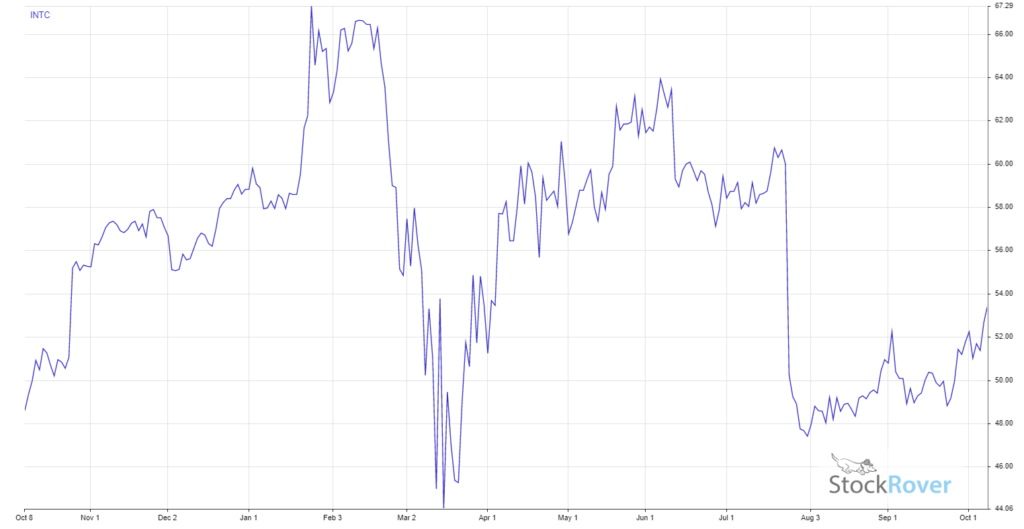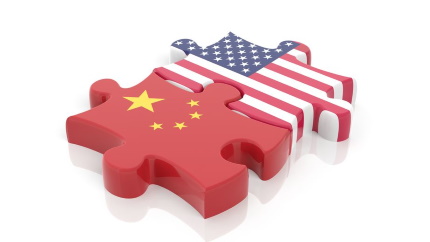There is no doubt there is a conflict brewing between the United States and China. But I don’t expect this fight to play out on the battlefield. Instead, it brings to mind the Cold War between the U.S. and the Soviet Union.
This new cold war has one major similarity with the old one: the science and technology rivalry between America and China is reminiscent of the space race-driven U.S.-Soviet rivalry.
However, there is a big difference too. The U.S. and Chinese economies are much more intertwined than the U.S. and the Soviet economies were. For example, there are more Kentucky Fried Chicken restaurants in China than there are in the U.S.
But turning back to science and technology, think about this: when the internet was still rather new, people thought there would be a single global market in knowledge, and the online economy would be worldwide.
However, that has all changed. The U.S. and China are moving rapidly toward two totally separate data realms, with almost no platforms in common. Today, instead of an Iron Curtain, there’s a tech curtain descending between us.
We see this over and over again: in search (Baidu versus Google), messaging and social media (WeChat vs WhatsApp, Facebook, Twitter, and Instagram), music (Kugou vs Apple Music, Pandora, and Spotify), payment (Alipay vs PayPal), dating (Momo vs Tinder). Even TikTok is separate from its Chinese counterpart Douyin, even though both are owned by ByteDance.
Is this a good thing?
Not if you are a U.S. technology company.
Export Controls Boomerang
We all know what the word boomerang means when used as a verb—it is an action that returns to the originator, often with negative consequences. And there is a great danger of a boomerang effect from current U.S. trade policy.
There is a growing, expansive use of export controls to starve Chinese companies of U.S. technologies. The goal seems to be to cut off almost completely U.S. tech companies’ entanglement in global supply chains and forcibly remove some of China’s customers.
Here’s How You Could Bring an Extra $41,569 a Year In Dividends [ad]
That is raising the hackles of U.S. semiconductor firms, which highly value their access to the massive Chinese market. They argue that these export controls will greatly affect their revenue streams.
Removing a big huge chunk of the market for U.S. semiconductor producers permanently is bad news.
Chad Bown of the Peterson Institute for International Economics argues that the export controls don’t achieve their national security goal of depriving Chinese companies access to the crucial tech, because Chinese companies can buy it from elsewhere. This same argument is made by the semiconductor companies themselves.
The reality is that supply chains are global. One major supplier for China could be South Korea’s Samsung. There are other assorted companies based in Taiwan and China that could replace US companies in the relatively near future.
Just look at what company is snapping up the contracts lost after the Trump Administration clamped down on Huawei: it isn’t am American company. It’s Samsung.
Think for a moment about the long-term effects of that permanent loss in revenues for U.S. companies. These losses will reduce the ability of, for example, U.S. semiconductor companies to spend money on R&D, reducing their long-term competitiveness and risking the depletion of the U.S. semiconductor industry.
The early warning signs about the shift in the center of gravity in the semiconductor sector are already there. Intel (INTC) has lost its long lead in process engineering to Taiwan Semiconductor (TSM), with the shift to the latest 7 nm chips technologies. Intel has had to delay its entrance into that market again while TSM expands its market share.

The Big Picture
Apjit Walia, Deutsche Bank’s Global Head of Tech Strategy, issued a very interesting report recently, in which he said that a large tech cold war could cost $3.5 trillion over the next five years!
Part of that $3.5 trillion figure comes from a $400 billion per year reduction in domestic end-demand from China, and $100 billion a year as the tech curtain creates extra costs for companies dealing with the rival internet platforms, operating systems, and communications and payment networks I mentioned earlier. Another trillion dollars in costs would come from rebuilding and reconfiguring the global supply chain, which would fall mainly on final goods manufacturers who currently use China as a manufacturing base.
This tech cold war even goes down to the consumer level. Deutsche Bank surveys found that 41% of Americans and 35% of Chinese said they will not buy each other’s products.
No one really wins a war like this, and the biggest losers would be the U.S. companies that generate a lot of their revenues from the Chinese markets. Apple (AAPL) comes to mind, with nearly 20% of its revenues from China.
However, it is the semiconductor companies that are most exposed. Qualcomm (QCOM) gets about two-thirds of its revenues from China. Micron Technologies (MU) gets about 57% of its revenues from China. Also on the list are Qorvo (QRVO) at 52%, Broadcom (AVGO) at 50%, Texas Instruments (TXN) at 44%, Advanced Micro Devices (AMD) at 39%, Veeco Instruments (VECO) at 36% and Maxim Integrated Products (MXIM) at 36%.
In case you are interested, Intel gets about 26% of its revenues from China, while Nvidia (NVDA) gets about 24% of its revenues from China. With the exceptions of Apple and Nvidia, the other stocks should be avoided.






